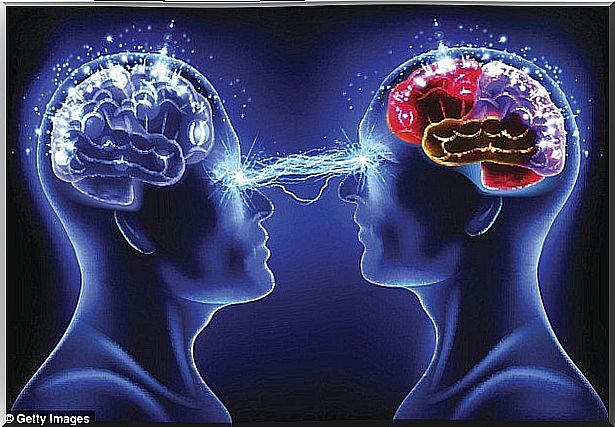Does Telepathy Exist?

They began to mention telepathy as such in the 20 th century. No document or vestige of antiquity makes reference to this phenomenon. One thing is certain that since this theme has emerged, it has not ceased to cause controversy. Until today, science has always refused to accept that telepathy is an existing phenomenon. At the same time, many testimonies continue to appear on telepathic experiences.
Telepathy is defined as the transmission of thought at a distance without the intervention of technology to promote this communication. It is a kind of “wireless communication” between two human brains. Thousands of people say they have experienced it, but so far we have never been able to reproduce this phenomenon in the laboratory.
Scientists have indicated that the existence of telepathy, from the point of view of physics, is not plausible. There is no section of the brain that is capable of acting as a transmitter or receiver of remote communication. The electromagnetic power of the brain also does not have the capacity to carry information and there is no known way through which this transport could take place.
In classical physics, telepathy is impossible. In the context of quantum physics, however, things are different. As a result, many recognized physicists have referred to this phenomenon and do not close the doors to the possible existence of telepathic communication. The subject is not closed.
Experiments on telepathy
Faced with thousands of testimonials from people claiming to have experienced telepathy, some scientists have focused on studying this phenomenon. One of the most famous experiments was that carried out by Karl Zener. Using five playing cards decorated with symbols, he carried out rigorous statistical monitoring on a group of participants. The results obtained during this experiment did not allow solid conclusions to be reached.

On the other hand, researchers Montaque Ullman and Stanley Krippner from Maimonides Medical Center in Brooklyn (New York) carried out an experiment on telepathic transmission during sleep. The results showed that in many cases, the image in the sender’s mind appeared in the receiver’s sleep. However, the study was dropped.
Another famous research is that of “Ganzfeld experiments”. A total of 88 were performed between 1974 and 2004. They gave a telepathic success rate of 37%. The controversial results motivated the realization of new experiments, this time giving an index of 34%. In statistics this result is significant, however in practice it generated many doubts, which is why the research was abandoned.
Rupert Sheldrake, a biochemist and physiologist at the University of Cambridge, performed another telepathic experiment between 2003 and 2004. After performing 571 telepathic communication trials, with 63 volunteers, he determined that the success rate was 41%. He published these results in numerous scientific journals.
Telepathy and quantum physics
The most controversial aspect is that telepathy contradicts the laws of classical physics and other sciences. Its possible existence would imply the redefinition of many axioms today considered valid. From the point of view of physics and neurology, it is impossible for a process to occur in the brain without any sensory or internal stimulus existing to trigger it.

For conventional science, thinking is a biochemical process. Therefore, it does not start if no material stimulus is perceived. Telepathy is characterized precisely by the absence of this material stimulus. However, one reality apparently excludes the other. However, since quantum physics, many hypotheses mentioning the existence of other forms of interactions have been raised.
Roger Penrose, physicist and mathematician expert in the Theory of Relativity, postulated the existence of a quantum biophysics of the mind. In his thesis, he was accompanied by Stuart Hameroff, an anesthesiologist from the University of Arizona. Penrose-Hameroff’s hypotheses paved the way for understanding telepathy from a scientific perspective. On the other hand, more than conclusions, they defined a new field of research.
Many people report experiences of telepathic communication. The certain pride which exists – and which has always existed – among those who defend the scientific postulates in force; has prevented any impetus to be given to research in this direction, beyond the isolated research that we have mentioned.
In this sense, the fact that telepathy has often been used for manipulation and even for magic is another big issue that lags its study. However, science will now have to determine if it leaves it there, or if, on the contrary, it opens the door to a new room filled with fascinating questions.









